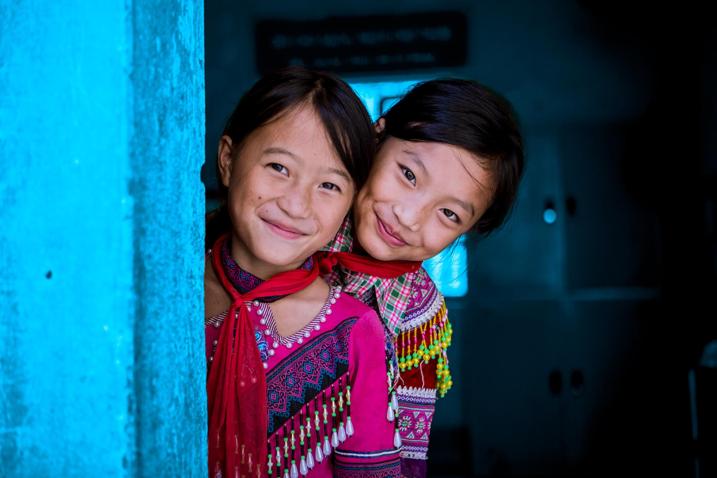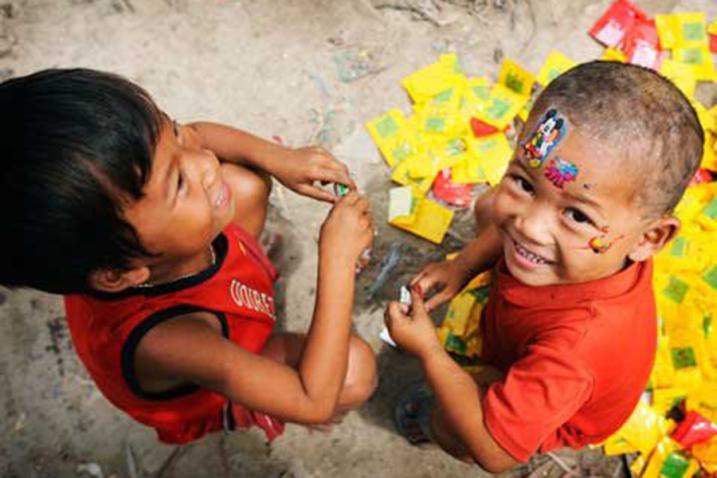
World Day for the Prevention of and Healing from Child Sexual Exploitation, Abuse and Violence - 18 November
Prevention, protection, and healing
Globally, countless young individuals are victims of sexual misconduct and exploitation. Such violations are pervasive, cutting across all nations and societal strata.
Children, especially girls, are at a greater risk of experiencing forced sex and sexual exploitation, abuse and violence, including both online and offline, and it’s also a common situation during armed conflicts.
In the global context of multiple challenges – the aftermath of the COVID-19 pandemic, conflicts, climate change and disasters – the inadequate action, or measures to address the root causes, such as rising inequalities, deepening poverty, and structural discrimination on intersecting grounds, continue to exacerbate the situations that expose children to exploitation, abuse and violence. Child victims and survivors of such crimes can face long-lasting negative impacts on their physical, mental, and sexual health and development. Such trauma on children may even amount to torture and other cruel, inhuman or degrading treatment.
Many victims and survivors never disclose and/or seek justice, rehabilitation or support because of the shame. For many victims and survivors, their child abuse experience affects their physical and mental health and well-being, and sometimes there are lifelong consequences.
In the 2030 Agenda for Sustainable Development, the dignity of children and their right to live free from violence is placed as a priority of the international development agenda through the implementation of the range of goals and targets of the 2023 Agenda relevant to ending exploitation, abuse, trafficking, torture and all forms of violence against children, as well as eliminating all harmful practices, such as child, early and forced marriage and female genital mutilation, which place children at risk of experiencing child sexual exploitation, abuse and violence.
Helping to heal children and adolescents who have been sexually abused
Sexual abuse of children and adolescents is a gross violation of their rights and a global public health problem. It adversely affects the health of children and adolescents. Health care providers are in a unique position to provide an empathetic response to children and adolescents who have been sexually abused. Such a response can go a long way in helping survivors recover from the trauma of sexual abuse.
Background
The sexual abuse and exploitation of children is a violation of human rights and a public health problem with significant consequences for global health and development.
Affirming the need to eliminate and prevent all forms of child sexual exploitation, abuse and violence and to promote the dignity and rights, including mental and physical health and healing, of those who experience child sexual exploitation, abuse and violence, on 7 November 2022, the General Assembly adopted resolution A/RES/77/8, proclaiming 18 November of each year as the World Day for the Prevention of and Healing from Child Sexual Exploitation, Abuse and Violence.
The United Nations invites all Member States, relevant organizations of the United Nations system and other international organizations, world leaders, faith actors, civil society, including non-governmental organizations, academic institutions, and the private sector, and other relevant stakeholders to commemorate the World Day for the Prevention of and Healing from Child Sexual Exploitation, Abuse, and Violence each year in a manner that each considers most appropriate. This includes commitments to ensure quality education and to raise public awareness of those affected by child sexual abuse and the need to prevent and eliminate child sexual exploitation, abuse, and violence, including online and offline. There is an imperative to hold perpetrators to account, ensure the access of survivors and victims to justice and remedies, as well as to facilitate open discussion on the need to prevent and eliminate their stigmatization, promote their healing, affirm their dignity, and protect their rights.
This part of the article has been published in United Nations' site through this link: World Day for the Prevention of and Healing from Child Sexual Exploitation, Abuse and Violence | United Nations (https://www.un.org/en/observances/child-sexual-exploitation-prevention-and-healing-day)
Child sexual abuse and exploitation remain concealed and stigmatized in many regions worldwide. To address this issue and break the cultural barriers of silence and resistance, it's essential to disseminate knowledge and effective strategies, starting from community levels and extending to national approaches. The report, "Action To End Child Sexual Abuse And Exploitation," delves into the need for distinct strategies in combating various forms of child sexual abuse and exploitation.
Read more: Action To End Child Sexual Abuse And Exploitation | UNICEF
Global Issues: Children
In the aftermath of World War II, the plight of Europe’s children was grave, and a new agency created by the United Nations stepped in to provide food and clothing and health care to these children. In 1953, UNICEF became a permanent part of the UN. Today, the agency works in more than 190 countries and territories, focusing special effort on reaching the most vulnerable and excluded children, to the benefit of all children, everywhere.
Read more: Global Issues: Children | United Nations
- Worldwide, it is estimated that approximately 120 million females under the age of 20 have experienced various forms of forced sexual contact. While there are no global estimates available for sexual violence against boys, data from 24 predominantly high- and middle-income countries indicate that the prevalence ranges from 8% to 31% among girls and 3% to 17% among boys under the age of 18.
- 1 in 4 children aged under 5 years live with a mother who is a victim of intimate partner violence.
- Adults who experienced 4 or more Adverse Childhood Experiences, including physical, sexual, and emotional abuse, are 7 times more likely to be involved in interpersonal violence as a victim or perpetrator and 30 times more likely to attempt suicide.
- 1 in 20 men admitted to online sexualised behaviour towards children who were known to be below the age of 12.
Key Documents
- General Assembly Resolution on establishing the World Day (A/RES/77/8)
- General Assembly Resolution that places the dignity of children and their right to live free from violence as a priority on the international development agenda (A/RES/77/1)
- Convention on the Rights of the Child
- UN Protocol on Allegations of Sexual Exploitation and Abuse Involving Implementing Partners
- UN Protocol on The Provision of Assistance to Victims of Sexual Exploitation and Abuse
Related Website
- Sustainable Development Goal 16: Promote peaceful and inclusive societies for sustainable development, provide access to justice for all and build effective, accountable and inclusive institutions at all levels
- Committee on the Rights of the Child
- Protection from sexual exploitation and abuse
- Preventing Sexual Exploitation and Abuse
- UN Special Representative of the Secretary-General on Violence Against Children
- UNICEF
- Inter-Agency Standing Committee on protection from sexual exploitation and abuse (IASC)
- Protection from Sexual Exploitation and Abuse Website (IASC)
- Protecting children from sexual exploitation and abuse Programme
- Sexual violence against children
- Online Course: Action to End Child Sexual Exploitation and Abuse
- OHCHR
Related Observances
- International Day of Zero Tolerance to Female Genital Mutilation (6 February)
- International Day of Innocent Children Victims of Aggression (4 June )
- World Day Against Child Labour (12 June )
- International Day for the Elimination of Sexual Violence in Conflict (19 June)
- International Day of the Girl Child (11 October )
- World Children's Day (20 November)







